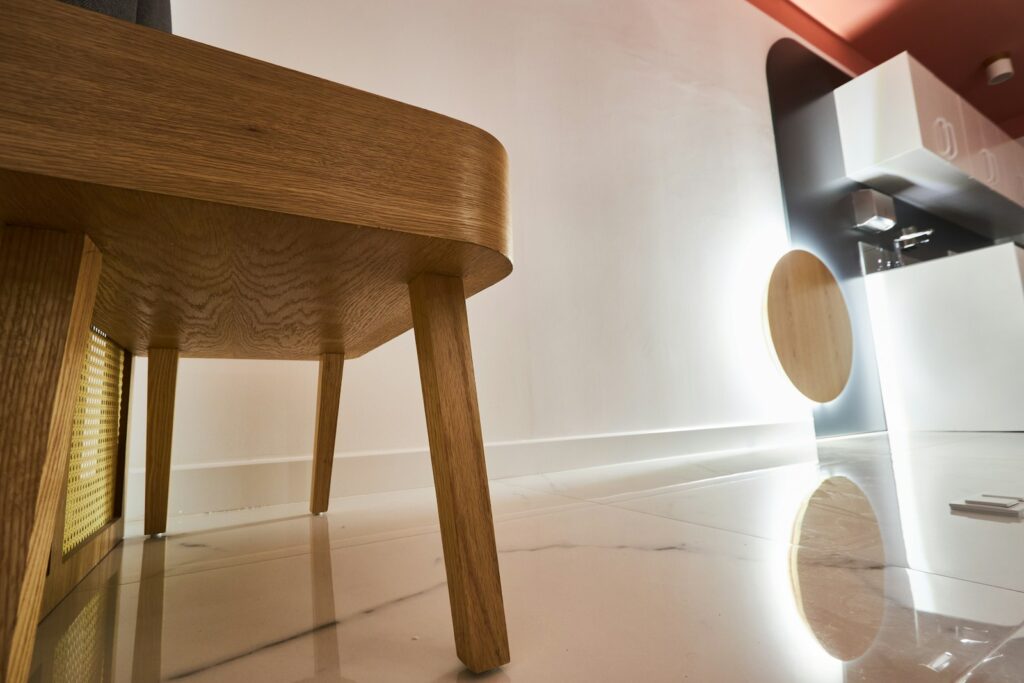AC3 and AC4 are different classifications for laminate flooring based on durability. AC3 is suitable for residential use with moderate traffic, while AC4 is designed for heavier residential or light commercial use. When choosing between AC3 and AC4 laminate flooring, consider the level of foot traffic in the area. AC3 is cost-effective for most homes, while AC4 offers enhanced durability for busier spaces. Ultimately, the choice depends on your specific needs and the intended usage of the laminate flooring.
Choosing the right laminate flooring for your space can be a pivotal decision. This article aims to provide an in-depth exploration of AC3 and AC4 classifications, guiding you through the selection process based on your unique needs and preferences.

AC3 Laminate Flooring
AC3, a widely used classification, caters to residential settings with moderate foot traffic. Its affordability makes it an attractive choice for many homeowners. However, it’s crucial to delve into the characteristics, applications, and considerations that surround AC3 laminate flooring.
AC3 laminate flooring is characterized by its ability to resist wear and tear, making it a dependable choice for spaces where foot traffic is moderate. Crafted with precision, these laminates are designed to withstand the rigors of daily life while maintaining an aesthetic appeal. The unique composition of AC3 laminates strikes a balance between functionality and cost-effectiveness, catering to the diverse needs of homeowners.
Ideally suited for residential areas with moderate traffic, AC3 laminate flooring proves to be an excellent fit for living rooms, bedrooms, and dining areas. Its robust construction ensures durability, making it an optimal choice for homes seeking a balance between performance and budget.
AC3 laminate flooring provides an affordable yet durable solution for residential settings. The tailored design of these laminates not only enhances the aesthetic appeal of your living spaces but also ensures a cost-effective investment. Homeowners seeking more than just functionality will find AC3 laminates to be a bespoke choice that caters to both style and practicality.
Pros and Cons of AC3 Laminate Flooring
Pros
a. Cost-effective: AC3 laminates offer durability without breaking the bank.
b. Versatility: Suitable for various residential spaces with moderate traffic.
c. Aesthetic appeal: Designed to enhance the visual appeal of your home.
d. Easy maintenance: Meticulously crafted for hassle-free upkeep.
Cons
a. Limited durability in high-traffic commercial areas.
b. May not withstand heavy wear and tear over an extended period.
c. While offering a balance, may not be as robust as higher AC-rated laminates.
Exploring AC4 Laminate Flooring
In contrast, AC4 is designed for heavier residential or light commercial use, offering enhanced durability. While it may come at a slightly higher cost, understanding its features, suitability for different environments, and overall pros and cons is essential for making an informed decision.
AC4 laminate flooring is defined by its robust construction, tailored to withstand more demanding environments. Crafted with precision and attention to detail, AC4 laminates are designed for durability, making them suitable for areas with heavier foot traffic. The tailored composition of AC4 laminates underpins their ability to resist abrasion, ensuring longevity while offering an aesthetically pleasing flooring solution.
When it comes to areas with increased foot traffic or light commercial spaces, AC4 laminate flooring takes center stage. Tailored for enhanced durability, these laminates prove to be an optimal choice for spaces such as offices, boutique shops, and other settings where a combination of style and resilience is essential. The tailored design of AC4 laminates ensures that they stand up to the challenges of ever-changing and demanding environments.
AC4 laminate flooring represents a solution that strikes a balance between durability and cost. While it may be priced slightly higher than AC3 alternatives, the investment is justified by the enhanced robustness and longevity AC4 provides. Homeowners and businesses seeking more than just a basic flooring option find AC4 laminates to be a tailored choice that aligns with their preferences for longevity and style.

Pros and Cons of AC4 Laminate Flooring
Pros:
a. High durability: AC4 laminates are crafted to withstand heavy foot traffic.
b. Versatility: Suitable for both residential spaces with high traffic and light commercial use.
c. Aesthetic appeal: Designed to enhance the visual appeal of spaces with a touch of sophistication.
d. Longevity: Robust construction ensures a longer lifespan compared to lower AC-rated laminates.
Cons
a. Higher initial cost compared to lower AC-rated laminates.
b. Maybe more challenging to install for DIY enthusiasts due to increased thickness.
c. While more robust, AC4 laminates may still show signs of wear over time.
Before settling on a specific laminate flooring type, meticulously assess the level of foot traffic in your intended area. Budget considerations, aesthetic preferences, and maintenance requirements all play a role in tailoring your decision towards the most suitable option.
Key Takeaways
In conclusion, the choice between AC3 and AC4 laminate flooring hinges on a careful balance of durability, budget considerations, and aesthetic preferences. AC3, with its cost-effective appeal and suitability for moderate residential traffic, emerges as a practical choice for those seeking an affordable yet stylish flooring option. On the other hand, AC4, with its heightened durability and versatility, proves ideal for spaces with heavier use, offering a robust and long-lasting investment. By following the decision-making checklist tailored to individual needs, readers can confidently navigate the complexities of the laminate flooring landscape. Ultimately, whether it’s the balance of AC3 or the resilience of AC4, this guide aims to empower readers with the knowledge needed to make an informed decision that not only meets but surpasses the ever-changing demands of their living or working space.




